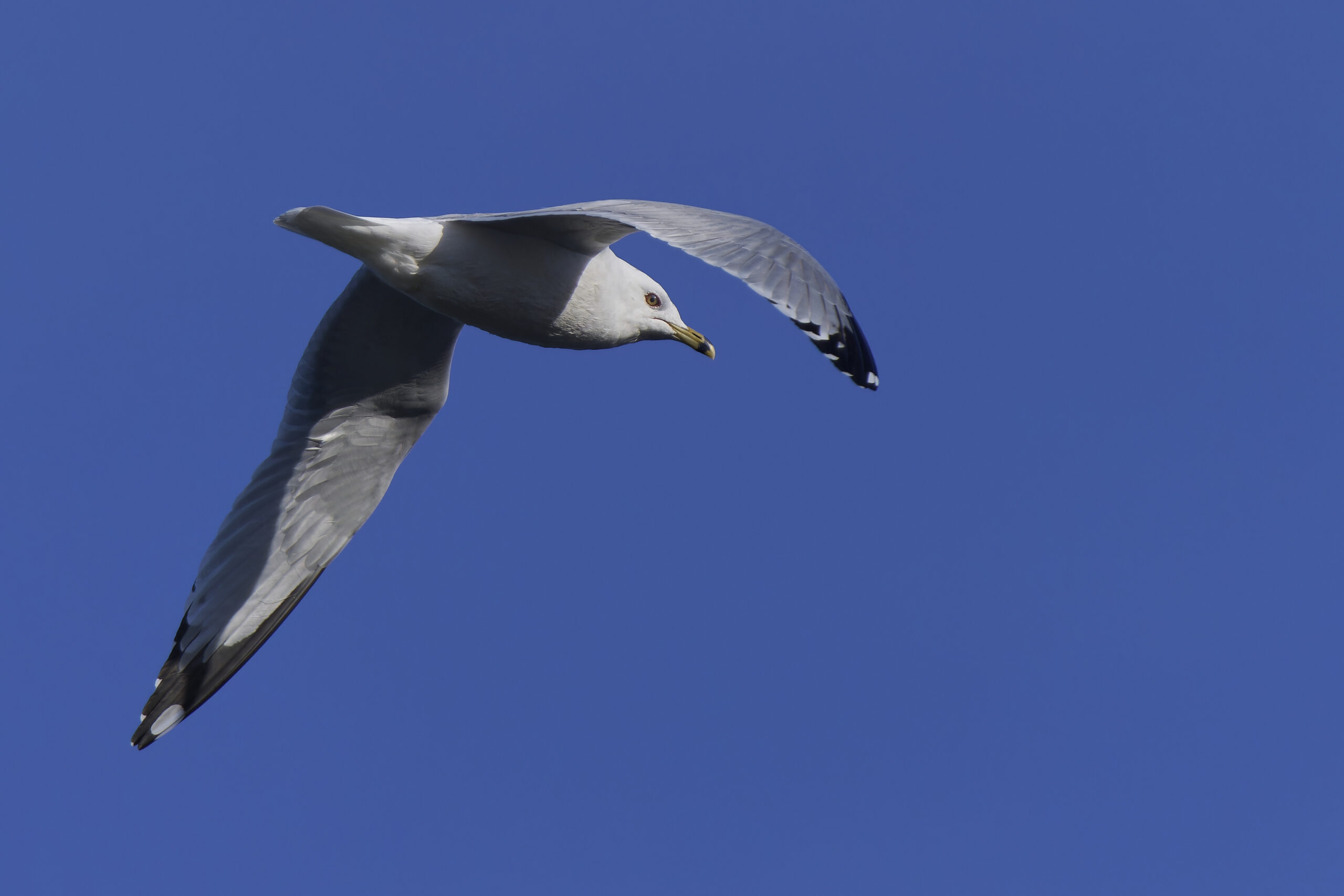When I think of gulls, I think of standing on the beach in North Carolina tossing bread to the seagulls and watching them compete for it. I don’t think of gulls on Owl Acres.
In fact, there are 17 species of gulls that visit Iowa, the most common being the ring-billed gull (Larus delawarensis). They are most often found at lakes and inland waterways. A week or so ago, a flock of them visited the neighborhood of Owl Acres. They landed in an open field nearby and got busy hunting for insects.
They’ve come up from a nearby lake or stream to forage through the grasses in open fields. They’ll eat just about anything, and will pick insects, worms, seeds, grain, chicks, eggs, and whatever else they can find to eat in the grass. At the lake they dine on fish, crustaceans and other aquatic creatures, and at the convenience store, they chow down on French fries. They hang around dumps and parking lots.
Iowans I know say they don’t remember seeing gulls here in years past and wonder at their numbers these days. The explanation has to do with fashion and federal legislation. In the 19th century, white feathers were prized to adorn ladies’ hats and gowns. Gulls, including inland gulls like the ring-billed gull, were hunted as a source for those feathers. The hobby of egg-collecting didn’t help either. The population was decimated by the end of the century. They were hunted nearly out of Iowa altogether. During the 20th century gulls and a lot of other birds were protected under the Migratory Bird Act of 1916. That made it illegal to hunt them and opened the long road to population recovery. They had a slow start, but today estimates are that between 3 and 4 million ring-billed gulls frequent inland rivers, marshes and lakes. Their numbers have exploded over the past several decades partly because they are so comfortable around humans and will eat whatever they can find.
Ring-billed gulls are medium-sized as gulls go, weighing a pound and a half with wing spans up to 48 inches and measuring about 18 inches from the tip of its bill to the tip of its tail. They look a lot like herring gulls which are bigger. The ring-billed gull gets its name from the black ring around its bill. It has yellow eyes, a yellow bill and yellow legs. Its back and wings are a light bluish gray, and its head, neck, tail and underside are white. White spots also decorate the dark bands at the tips of the wings. Like other gulls, their wings are long and narrow and taper to points at the end.
Ring-billed gulls are intelligent birds who like to play. One of their games involves flying high with something in their beaks, dropping it and chasing after it, trying to catch it again. They’ve also been observed “fishing” by dropping bread on a lake, waiting for the fish to come check it out, and grabbing the fish.
Gulls in folklore are seen variously as omens of good and omens of evil or bad luck. One story of deliverance is celebrated in Utah by naming the California gull the state bird. The story is that in the early days of settlement in Utah in 1848, a cloud of grasshoppers covered the land and began eating settlers’ crops. The settlers were sure the insects would destroy their crops altogether and leave them to starve in the winter. Miraculously, according to the story, a huge flock of gulls flew in and ate all the grasshoppers. Crops were saved, and Mormons didn’t starve. And that’s why the California gull is the state bird of Utah.
Native to North America, ring-billed gulls migrate and nest in huge colonies. In the fall they head for Mexico, and in the spring they go north to the same breeding grounds they had last year. They nest on the ground, preferably on an island in a lake or river where their nests will be less susceptible to predators. On average, a breeding pair will raise two chicks each year. Since they can live (and breed) for an average of ten to 15 years in the wild, a single pair can contribute 20 to 30 more members to the gull population. This, too, may account for the profusion of gulls in recent years.
Photo from Wikimedia.org by Paul Danese Alt text: Ring Billed Gull in flight. White body, blue grey wings with black tips. Its bill is encircled by a distinctive black ring. The bird has the long, narrow wings of an active soarer.

1 comment
Interesting! I didn’t realize there was an inland variety of gull. I always assumed they just followed the rivers in from the sea. Read and learn!!